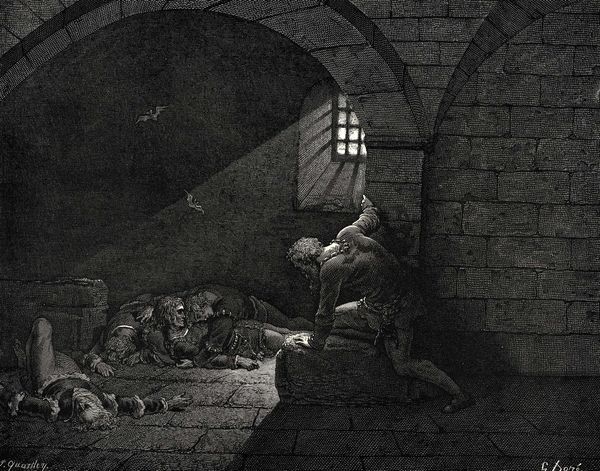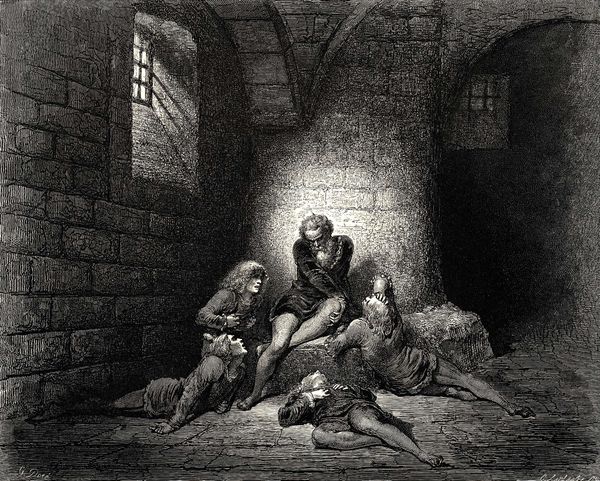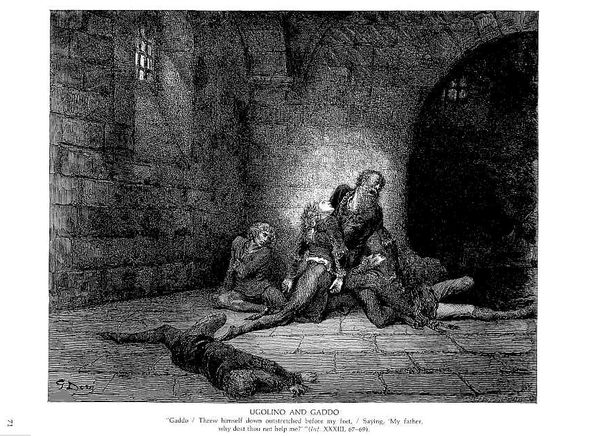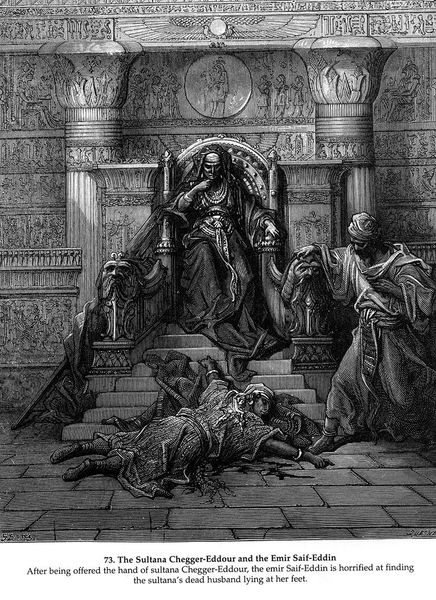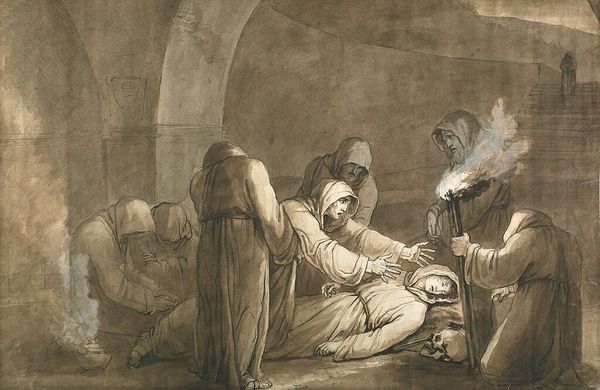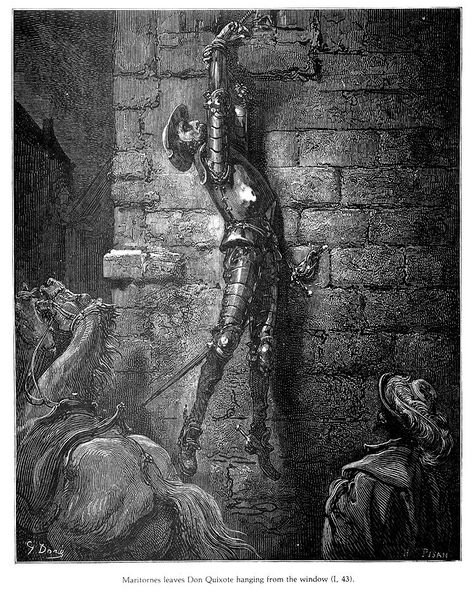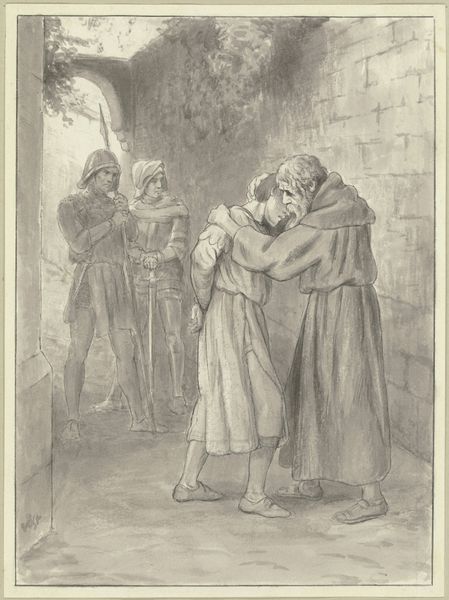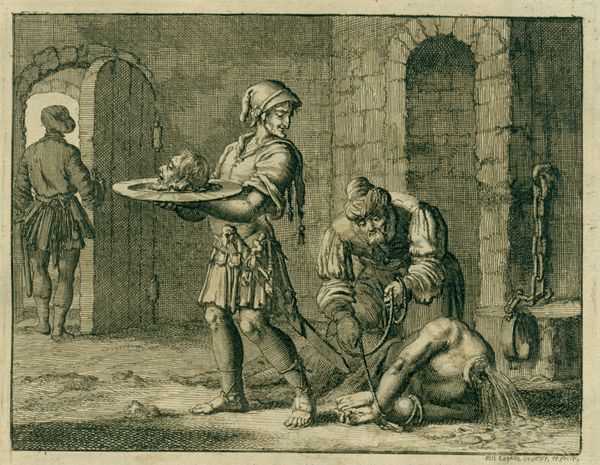
drawing, print, paper, ink, graphite, engraving
#
portrait
#
drawing
#
narrative-art
# print
#
sculpture
#
charcoal drawing
#
figuration
#
paper
#
form
#
charcoal art
#
ink
#
romanticism
#
line
#
graphite
#
genre-painting
#
history-painting
#
charcoal
#
graphite
#
engraving
Copyright: Public domain
Curator: Today we’re examining Gustave Doré’s “The Inferno, Canto 33,” an engraving that plunges us into the depths of Dante’s hell. Editor: My immediate impression is one of profound darkness, both literally and figuratively. The stark contrast between light and shadow amplifies the suffering depicted. Curator: Indeed, Doré’s masterful use of chiaroscuro underscores the emotional weight of the scene. Observe how the linear quality of the engraving lends a certain rawness to the forms, enhancing the overall sense of despair. Editor: The cluster of figures becomes a potent symbol for utter destitution, and I feel it deeply. One figure seems to clutch at another with desperation, which speaks volumes about the reliance on kinship when life unravels completely. Do you agree? Curator: Certainly, the composition channels the intensity of that bond while simultaneously expressing alienation. The claustrophobic setting, with its rigid stone structure and minimal light source, serves to emphasize the characters' isolation. The sharp lines describing the stonework contrast with the softness given to the faces, highlighting their vulnerability within this prison. Editor: What grips me is the visual narrative embedded in this. Canto 33 tells the gruesome tale of Ugolino della Gherardesca and his sons, starved in a tower. Their expressions are silent screams of suffering and betrayal. Ugolino's eyes are fixated upwards as he mourns in agony. What is left except pain and the haunting memory of treachery? Curator: The visual elements—line, shadow, and composition—work together to create an overall effect of torment, highlighting the poem's underlying philosophical concerns. There is great interplay of these elements, working as structural components to convey suffering. Editor: Doré captures something timeless about human suffering, making "The Inferno, Canto 33" not merely an illustration but a harrowing exploration of existential anguish and humanity’s capacity for inhumanity. Its historical roots become something profoundly universal and applicable even now. Curator: It's true. He presents us with not just an image, but an experience, forcing us to confront these universal aspects. Doré’s brilliance is to manipulate the tools of his medium to evoke a visceral understanding of something beyond the visual.
Comments
No comments
Be the first to comment and join the conversation on the ultimate creative platform.
